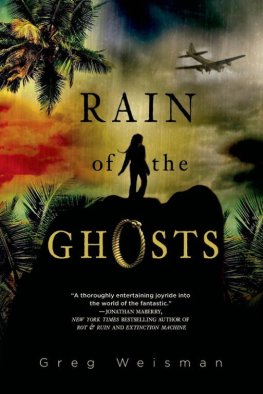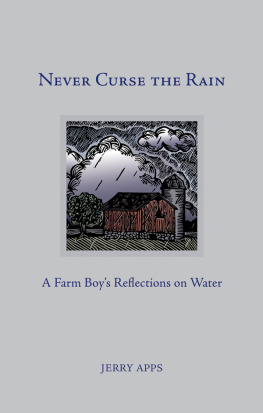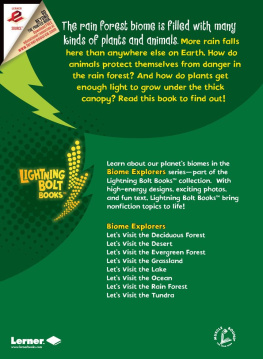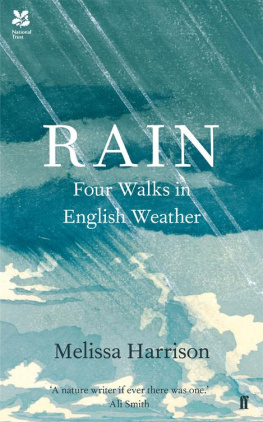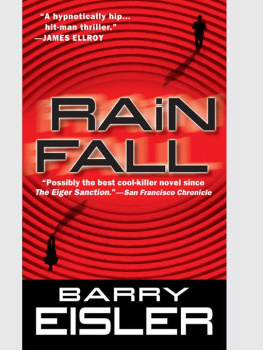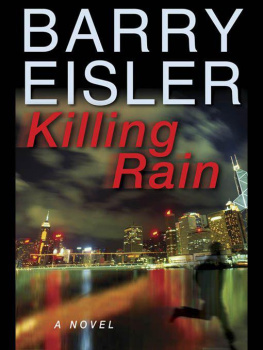CREATING RAIN GARDENS

Childs play in a rain garden
Cleo Woelfle-Erskine and Apryl Uncapher
CREATING RAIN GARDENS
Capturing the Rain for Your Own Water-Efficient Garden

The case study Street Orchards for Community Security was adapted with permission from desertharvesters.org and Rainwater Harvesting for Drylands and Beyond, Vol. 2: Water-Harvesting Earthworks by Brad Lancaster (Rainsource Press, Tucson, 2008), available at HarvestingRainwater.com.
Copyright 2012 by Cleo Woelfle-Erskine and Apryl Uncapher.
All rights reserved.
Design by Jason Blackheart
Illustrations by Arthur Mount
Published in 2012 by
Timber Press, Inc.
The Haseltine Building
133 S.W. Second Avenue, Suite 450
Portland, Oregon 97204-3527
timberpress.com
2 The Quadrant
135 Salusbury Road
London NW6 6RJ
timberpress.co.uk
Printed in the United States of America
Library of Congress
Cataloging-in-Publication Data
Woelfle-Erskine, Cleo.
Creating rain gardens: capturing the rain for your own water-efficient garden/Cleo Woelfle-Erskine and Apryl Uncapher.1st ed.
p. cm.
Includes bibliographical references and index.
ISBN 978-1-60469-240-2
1. Rain gardens. 2. RunoffManagement. 3. Ecological landscape design. I. Uncapher, Apryl. II. Title. III. Title: Capturing the rain for your own water-efficient garden.
TD657.4.W64 2012
635.95dc23
2011032473
A catalog record for this book is also available from the British Library.
CONTENTS


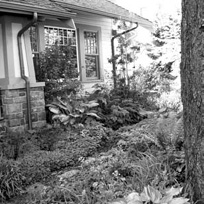
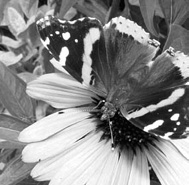
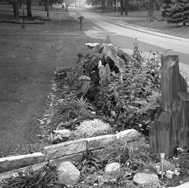

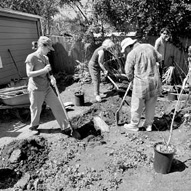
ACKNOWLEDGMENTS
JUST AS A RAIN GARDEN IS COLLABORATION AMONG RAIN, THE LANDSCAPE, AND LIVING CREATURES,
this book has been a rich and multifaceted collaboration. We worked together in every phase of research and writing and developed the methods presented here after conversations with rain gardeners across North America. We also field tested our site assessment and design methods on participants in hands-on workshops in Oakland, California, during 2010 and 2011.
Our shared love of gardening, photography, and ecological design and our love of water in all its natural forms run through the book. Rain, sun, clouds, soil, rivers, and plants are key collaborators in this effort as well.
Many of the site assessment and design activities in this book arose in collaboration with members of Greywater Action and the East Bay Academy of Young Scientists. Cleos interest in sustainable water cultures evolved from conversations with members of the Environmental Justice Coalition for Water and the food justice movement and with Native Americans involved in restoration projects on the Nisqually, Klamath, Elwha, and Clark Fork Rivers. He hopes that this spirit of collaboration among people and across species comes through in these pages.
We would like to thank all of the rain gardeners who shared their rain gardens and offered expert review, especially David Hymel, Brad Lancaster, Brock Dolman, Jeanette Dorner, and Christopher Shein. Numerous rain guide authors and low-impact development experts in the cities of Seattle, Portland, Fort Wayne, Charleston, Berkeley, and San Francisco answered technical questions that improved the books geographic scope. Nigel Dunnett contributed a U.K. perspective, case studies, and helpful comments on the manuscript. We take full responsibility for any remaining errors or omissions. Many thanks are due to Juree Sondker at Timber Press for proposing this book, Lisa DiDonato Brousseau and Eve Goodman for their help in editing, and the Timber Press crew for bringing it into the world.
Cleo thanks Joel Glanzberg for introducing him to integrative design and water harvesting traditions; Brock Dolman and Brad Lancaster for helping develop his ability to read the landscape and sky; Laura Allen and Greywater Guerrillas/Action members past and present for plumbing and popular education collaborations; July Cole for watery explorations by trail, canoe, and pickup truck, philosophical contributions against Manifest Destiny, and the planning flow chart; Andrea del Moral for a decade of collaboration in art, politics, and water; and Jessica Diaz and Xarick Matsen for ongoing conversations on community science. He thanks Emilie Agosto and Anne Blair for South Carolina rain garden collaborations and shrimp and grits; his mother, Gretchen Woelfle, for manuscript review; his father, Peter Erskine, for photos of Oregon rain gardens; and both parents for their support of his gardening experiments past and present. He also thanks the U.S. Forest Service for a month of skywatching at Round Mountain Lookout near Mount Shasta, where he began work on this book.
Apryl thanks Bill Wilson, her greatest mentor in the field of environmental engineering and ecological design, for sharing years of experience and how nature knows best. She is indebted to her husband, Alex, for making every project better, and daughters, Nara and Reya, for keeping days fun and full of love. Apryl is grateful to her mother for inspiring a passion of nature and gardening, her father for encouraging answers through curiosity and commitment, and her sister for tirelessly offering faithful guidance. And finally, thank you to water heroes everywhere, creating a mindful water culture.

Many storm drains empty directly into a nearby stream or river.
INTRODUCTION
THE GARDEN IN THE RIVER, POOLS IN THE GARDEN
IN THE MIDDLE OF THE NIGHT,
RAIN BEGINS TO FALL. YOU HEAR IT ON the roof through your dreams. In the morning, clouds hang low over the city and rain falls lightly. Outside, rain cascades off your roof, bouncing down bell-shaped chimes suspended from the gutter, and splashes down on a large flat stone. The rain falls faster and rushes through your landscape, over stone and down grassy swales. The swales spill into shallow depressions filled with flowering shrubs and grasses. Water rises in the depressions, creating small pools throughout the garden. Just as the basins begin to overflow, the clouds thin and sun breaks through. Suddenly the tree over the rain garden is full of birds, and frogs sing from the shadows. Mist rises from stepping stones and leaves, and water in the basins sinks into the ground.
Next page

